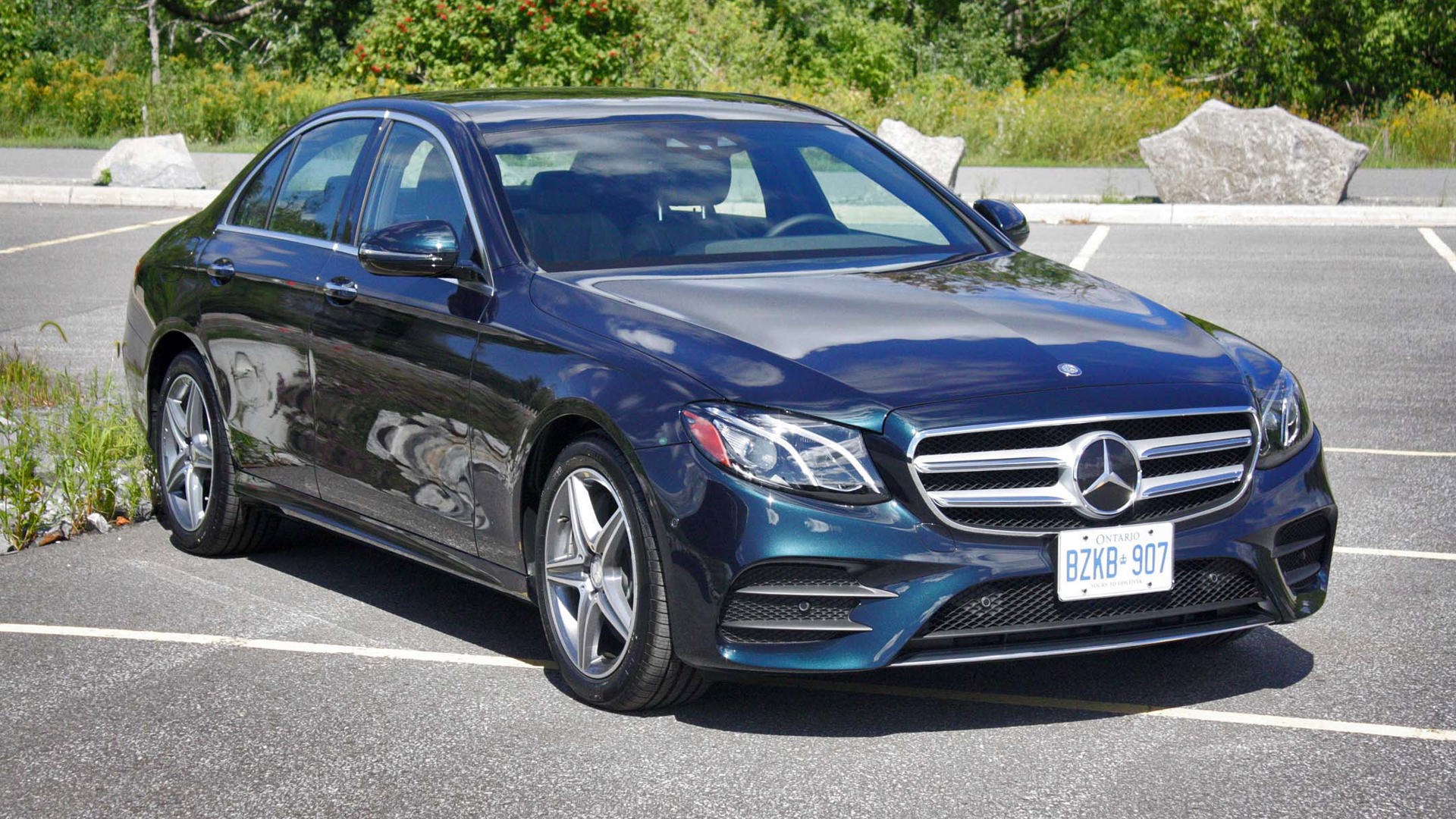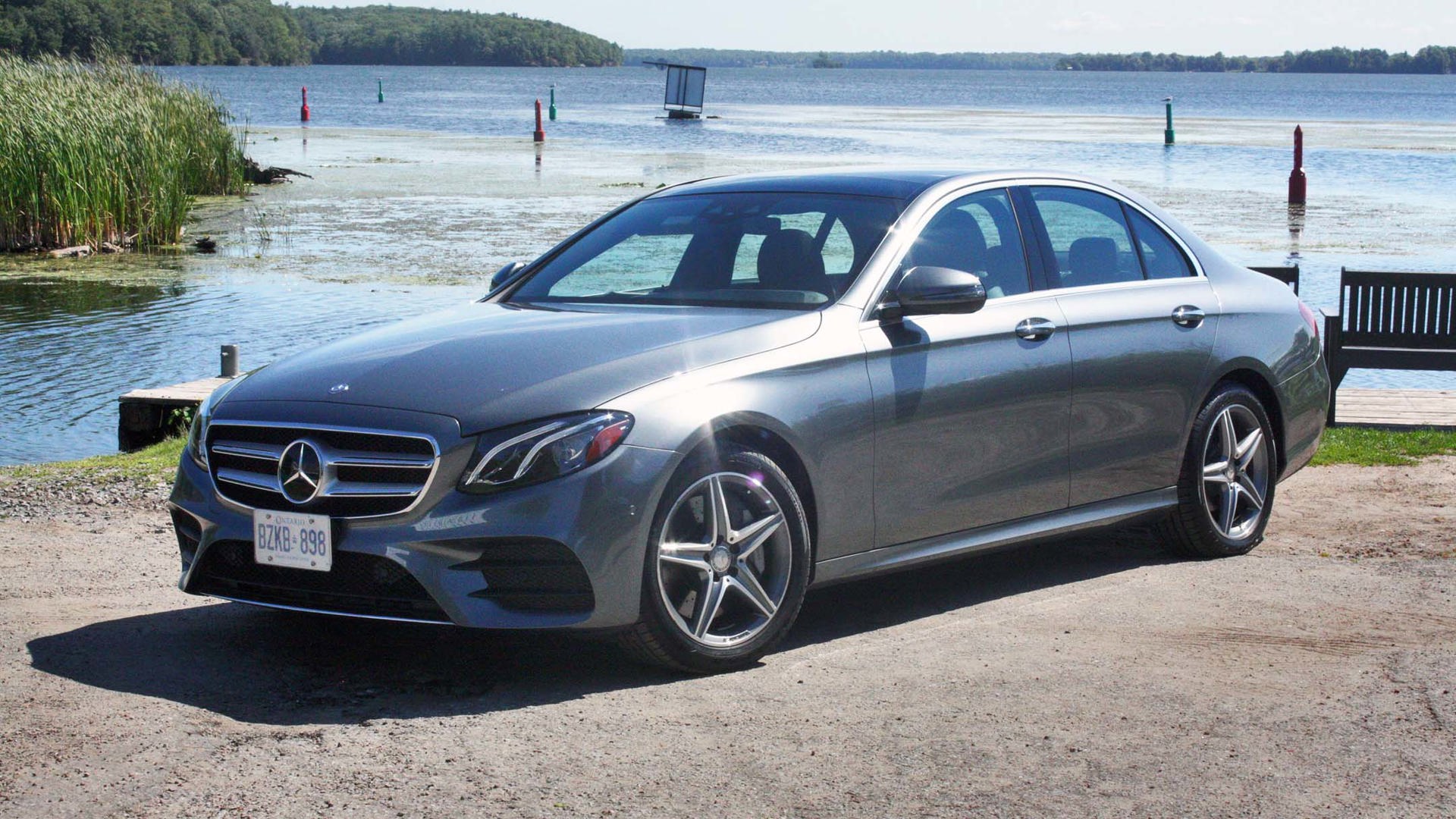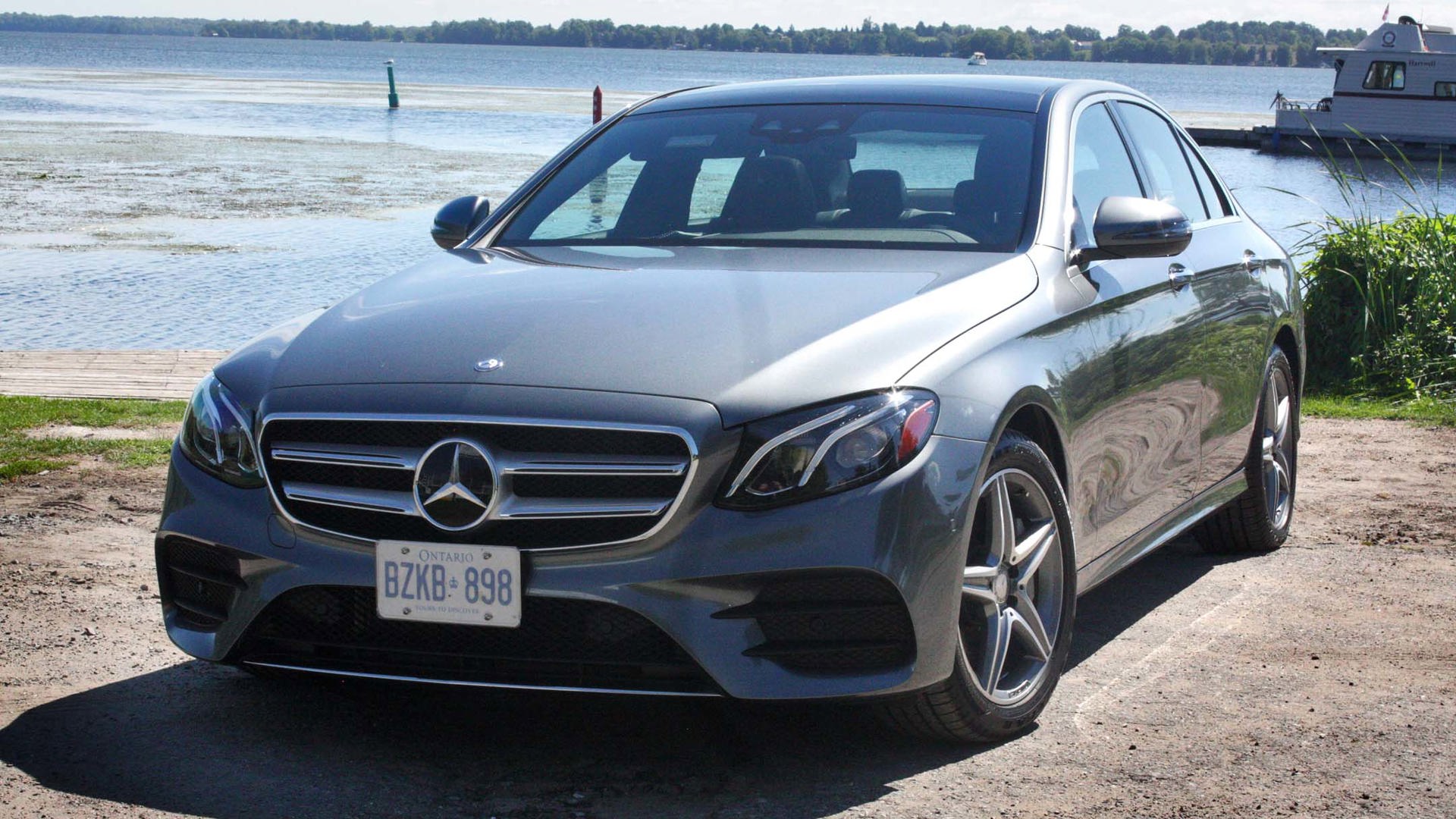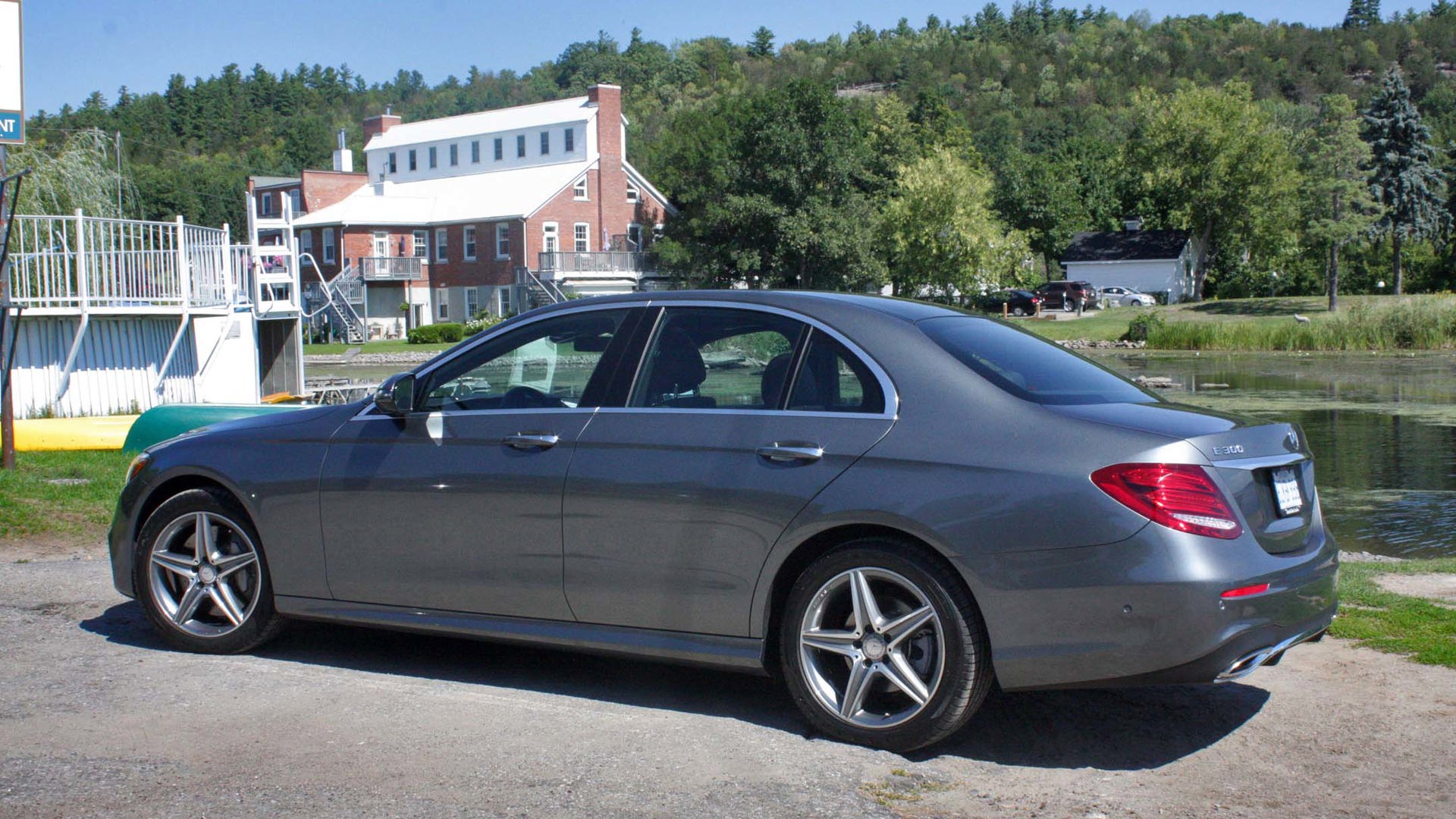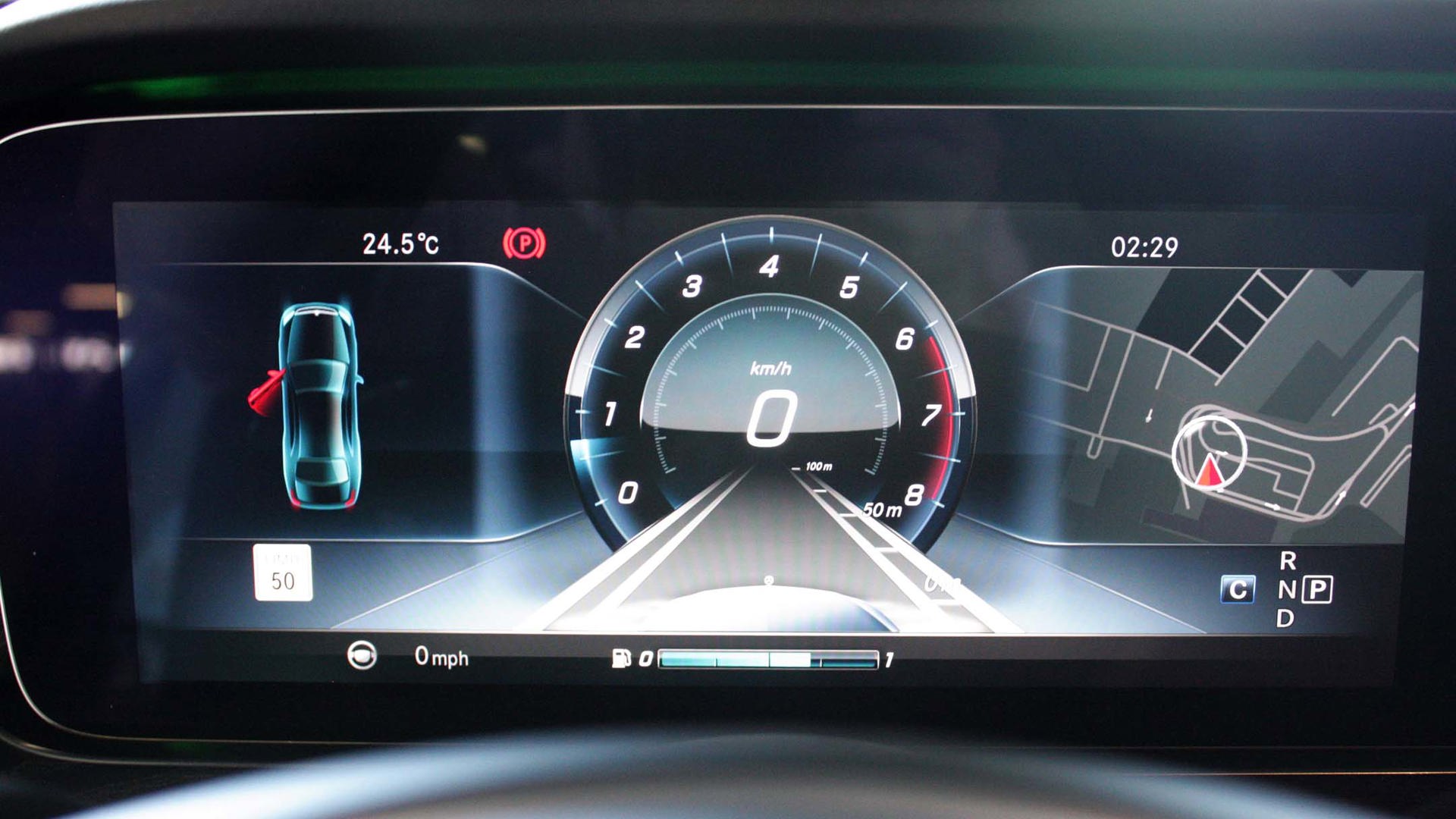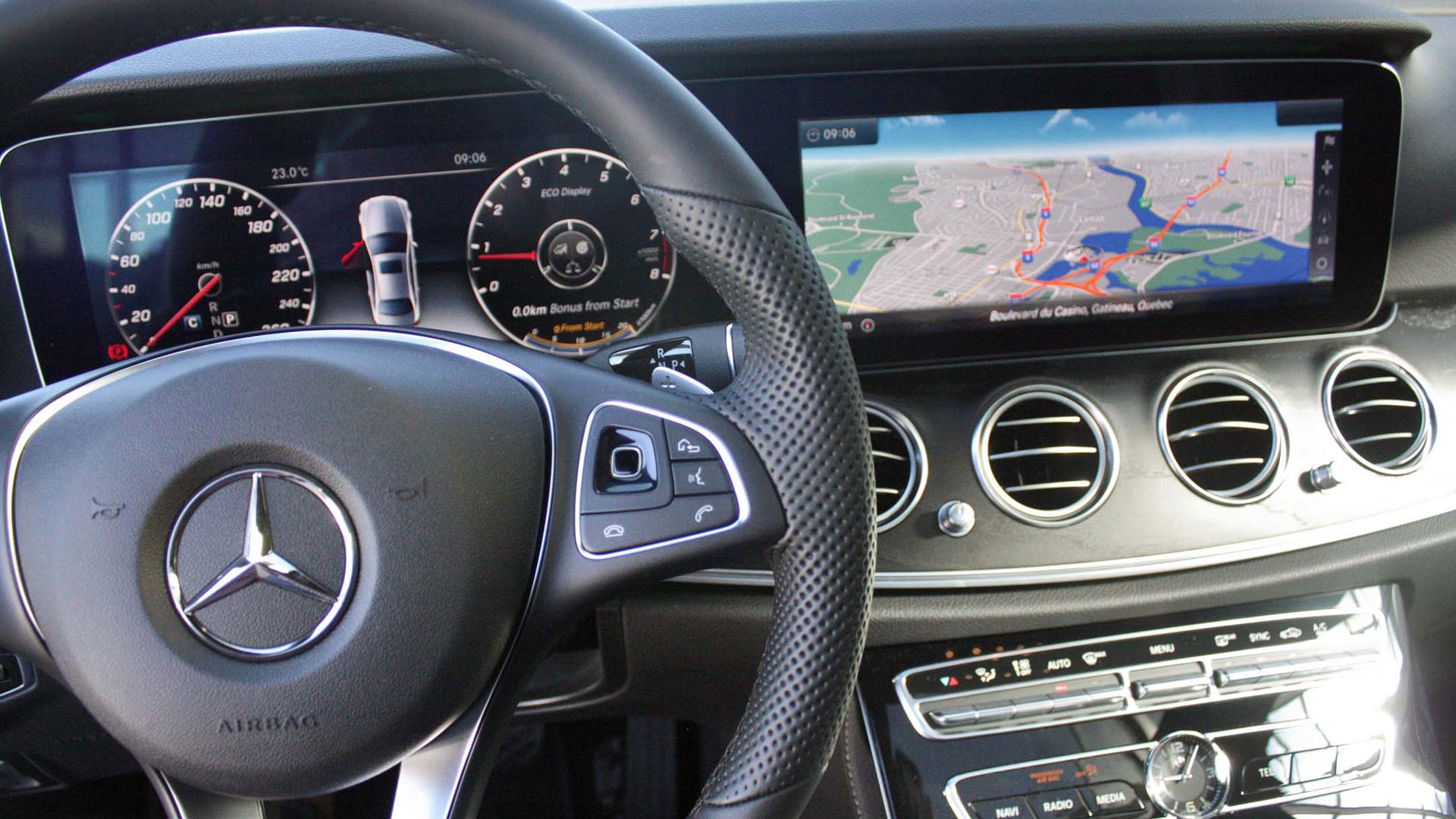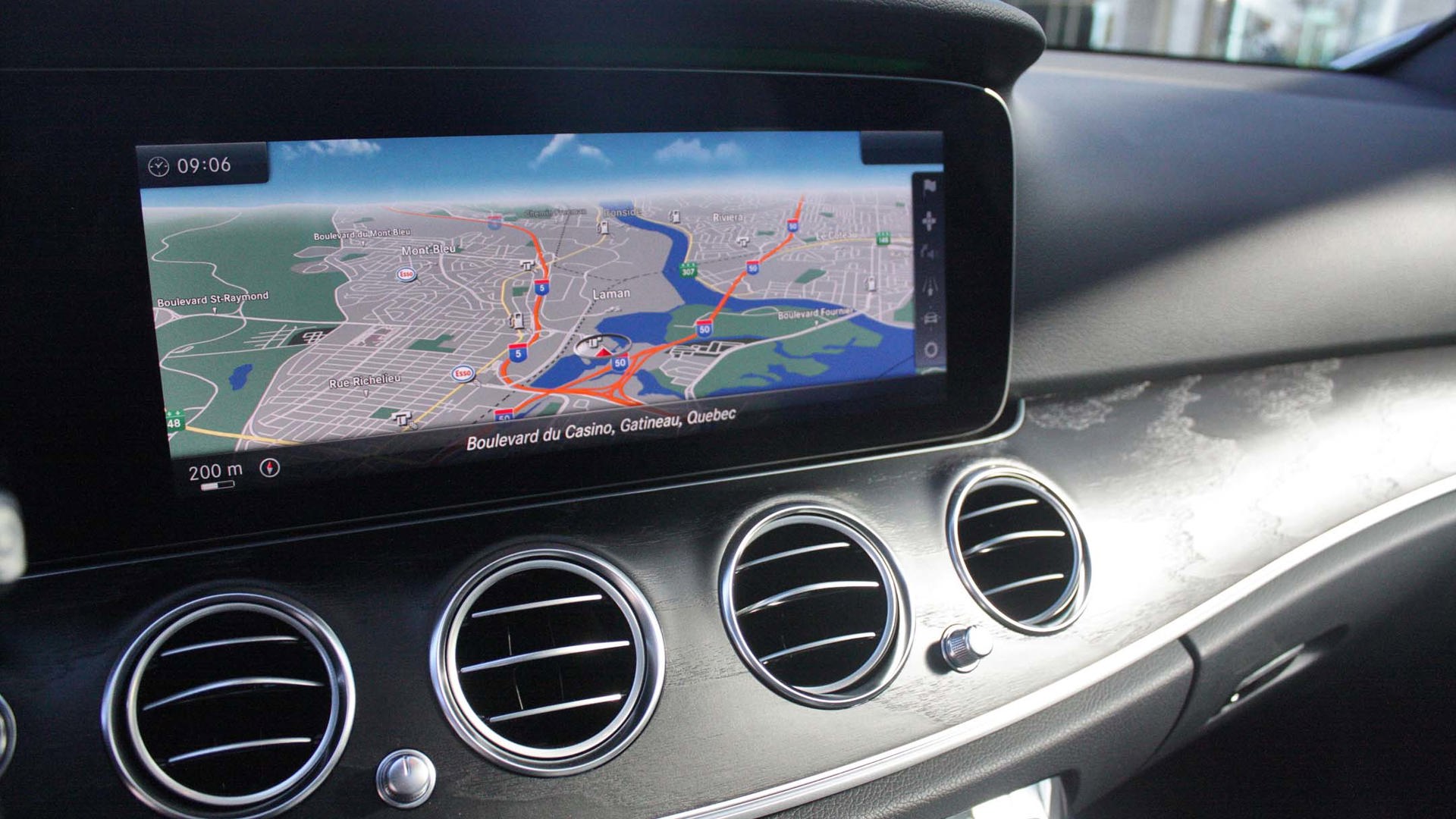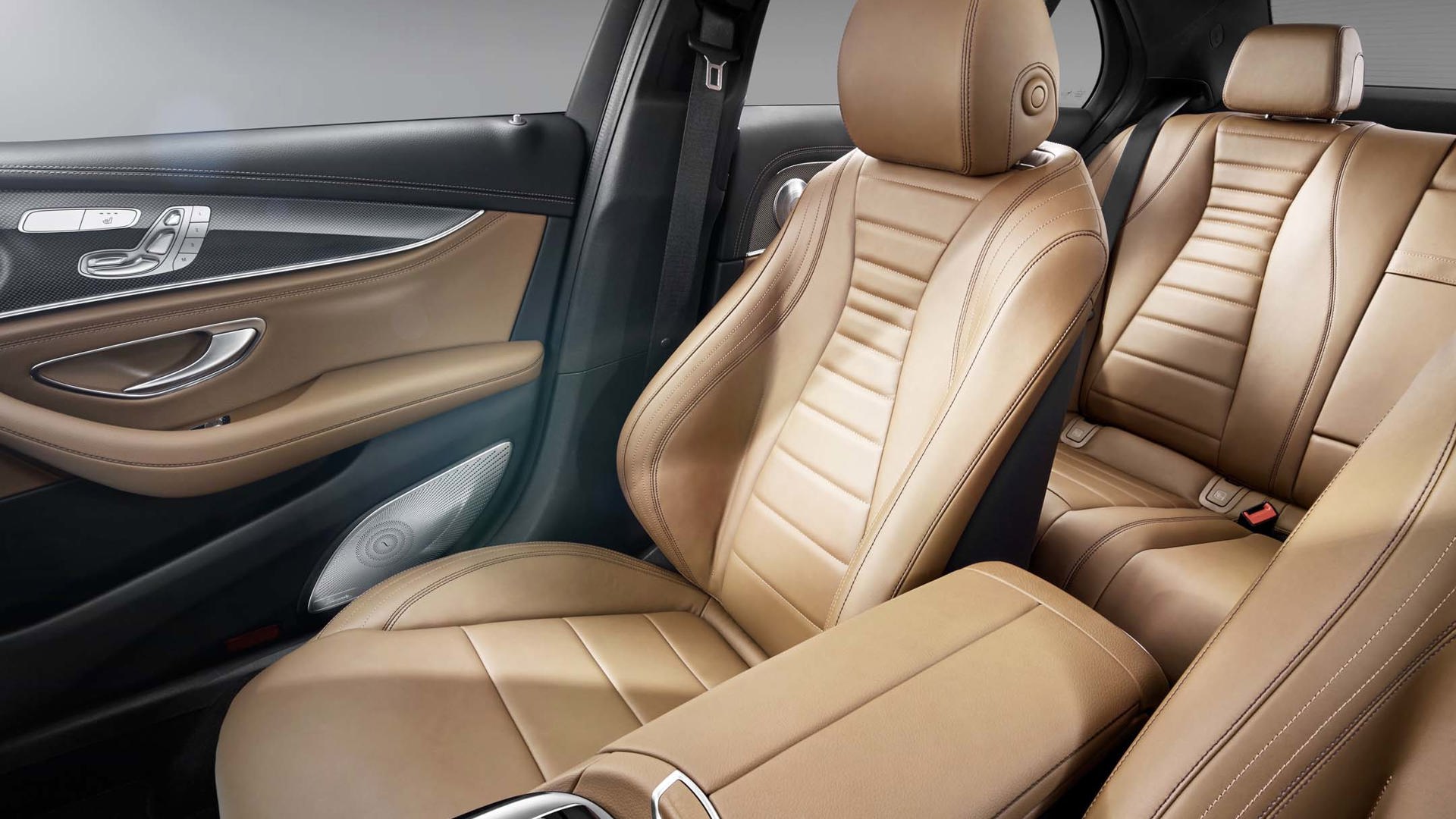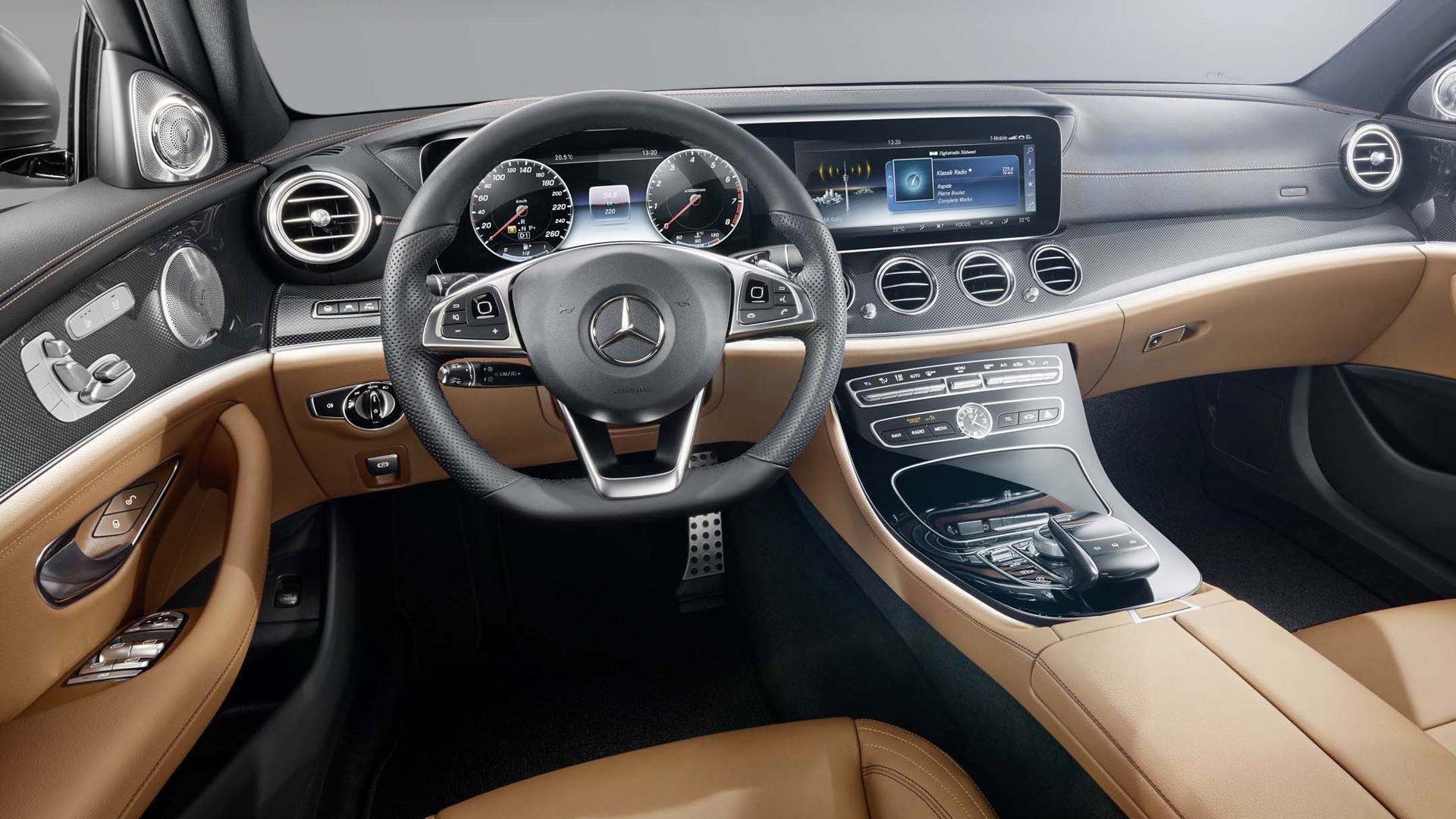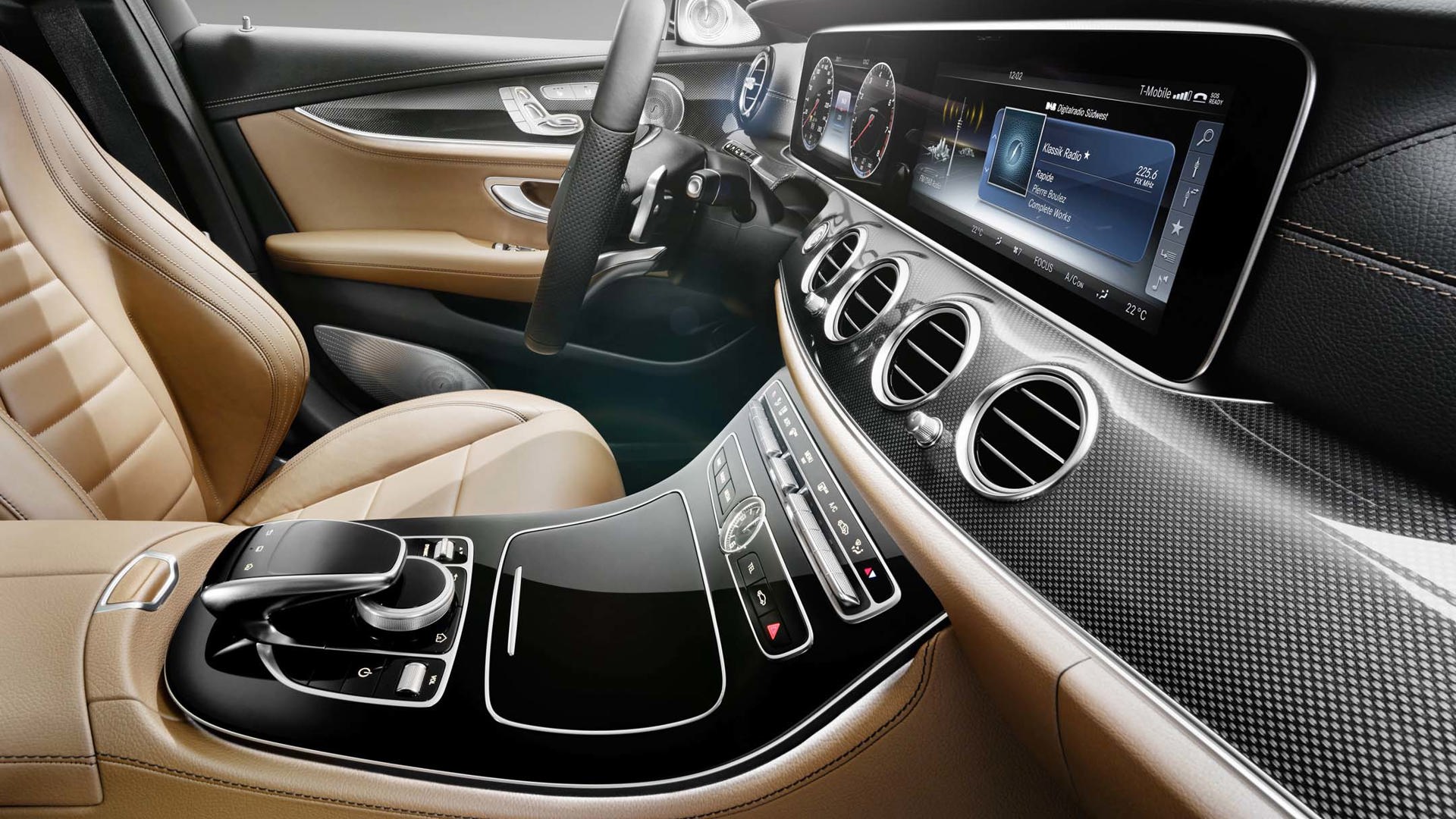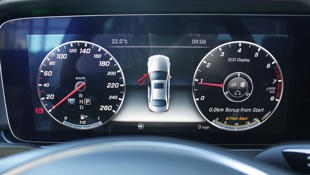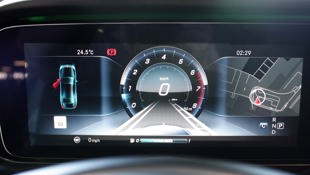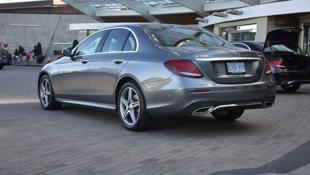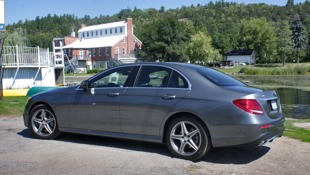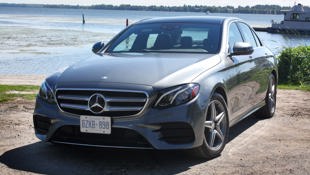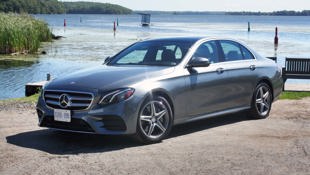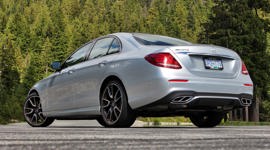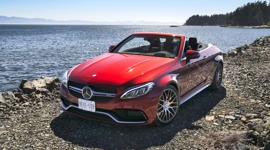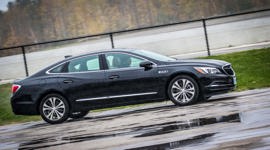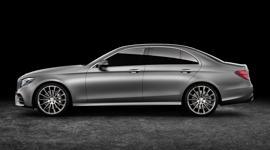The drive toward fully autonomous vehicles is a slow but steady one. Each advance in self-driving technology is a milestone on the journey towards limiting human involvement to telling the car where you want to go.
Mercedes seems confident that its car moves to the head of the class in terms of advanced safety and driver assist features that make it more autonomous – or, at least, more capable of taking on tasks normally left up to the driver.
Mercedes-Benz's 2017 E-Class is among the latest vehicles to inch us closer to that day: during a late-August drive event in Ottawa, Benz Canada only mentioned the car's good-looking updated styling and even more notable interior in passing. Instead, it focused on new technology the company says makes its newest sedan a "masterpiece of intelligence."
The 10th generation of the German luxury brand's mid-size model goes up against the BMW 5 Series, Audi A6, Cadillac CTS and Lexus GS. Mercedes seems confident that its car moves to the head of the class in terms of advanced safety and driver assist features that make it more autonomous – or, at least, more capable of taking on tasks normally left up to the driver.
This latest E-Class went on sale in July as the E 300 4MATIC, powered by a turbocharged 2.0L four-cylinder engine paired with a new nine-speed transmission and Benz's all-wheel drive setup. We'll get to driving impressions shortly, but the way the car goes down the road is certainly not what makes it special.
More notable is the E-Class's vast array of electronic eyes and ears: radar sensors front, rear and side, ultrasonic sensors all around and a forward-facing stereo camera provide information to help the car decide when to activate any of its myriad safety features. New items include an updated cross-traffic system that will automatically brake if another vehicle drives out in front of you, a pedestrian wanders into your path or you fail to notice a person inexplicably standing in the roadway.
Adaptive cruise control and active lane keeping assist return, along with a "drive pilot" cruise control function that maintains a set distance from the vehicle in front, helps keep the car centred in its lane and will even perform lane changes when you want to pass a slower vehicle. Also new here is active emergency stop assist: if the car senses the driver is no longer in control (say, in the event of a medical emergency), it will turn on the hazard lights, slow the car to a gradual stop in its lane and shift into park.
Other returning items include pre-safe, which does things like tighten seatbelts and close windows if a crash appears imminent, and pre-safe plus, conceived to minimize the risk of injury when your car is struck from behind. Pre-safe sound is new: it aims to minimize hearing damage caused by the explosive nature of airbag deployment by pumping pink noise (it sounds like radio static) through the stereo in the moments before the airbags pop. This, says Benz, causes a tiny muscle in the inner ear to flex and helps protect the eardrum from damage when the airbag inflators go off.
The new E-Class is even there for you when parking: the parking pilot feature will help you find a spot (parallel or perpendicular), put the car in it and then drive it out again for you when you’re ready to go.
This is all a lot to take in, and on paper, makes this new Benz out as some sort of futuristic vehicle. In reality, the 2017 E-Class's new safety features are an evolution of those available on other Benz models (not to mention the outgoing version of this car) and from other automakers.
Take all that high-tech gear out of the equation and you're left with evolutionary changes to what was already a nicely-sorted luxury sedan.
The highlight of the new interior is a massive optional LCD display that gives the driver customizable gauges and shows navigation and other functions controlled by Mercedes' COMAND infotainment system.
The E-Class lets the driver toggle between digital representations of traditional gauges and a digital speed display flanked by trip and navigation displays. We found ourselves wishing Benz had gone further to create something like Audi's virtual cockpit, which practically turns the entire cluster into a front-and-centre navigation display.
Mercedes-Benz Canada makes that slick display part of the premium package, which the company says it expects well over 90 percent of buyers to go for. That $5,100 option pack also brings a back-up camera, panoramic sunroof, heated steering wheel, Burmester stereo (with gorgeous aluminum speaker grilles), power trunk closer, passive keyless entry with push-button start, park assist with parking pilot and an engine sound enhancer.
The fact that the basic car doesn't come with a back-up camera for its $61,200 starting price raised some eyebrows, but Benz said the premium package's high take-rate and technical considerations made it more sensible to bundle the camera in with it.
The COMAND system gets its own update: there's now a touchpad on top of the hand rest that arches over the control knob, and twin touchpads on the steering wheel that operate menus in the slick digital display.
Driver and front passenger get heated front seats wrapped in artificial Artico leather with 16-way power adjustments that include four-way lumbar and headrests. And here's something we've never seen: the driver's seat controls include a button that allows whoever's in charge to move the front passenger seat into better position for easy ingress.
Four-cylinder engines power versions of most mid-size upscale sedans, so Mercedes breaks no ground using its 2.0L here, despite this being the first gas-fueled four-cylinder E-Class in North America. (The last generation included a four-cylinder diesel option.)
Even this motor's power figures are only nominally different from those of BMW's own 2.0L turbo four; it's no powerhouse, but moves the E-Class with more than a measure of grace. Predictably, Mercedes was concerned buyers would miss the more musical sound of the last-generation car's entry-level six-cylinder, and so cars fitted with the premium package get an electronic sound enhancer whose volume varies depending on which of the four dynamic select drive modes – eco, comfort, sport or sport plus – is in use.
Those settings alter throttle and transmission responses and power steering assist; in cars with the optional air suspension, it also tightens up the ride in the two sport modes.
Even if the four-cylinder's sound and vibration signature will be less appealing to some customers, they may well appreciate this motor's more generous low-end torque and the new nine-speed's tighter gear ratios, which Mercedes says contribute to fuel consumption ratings of 10.8/8.1 L/100 km (city/highway), down from 11.9/8.2 for the old V6-powered E 300.
If a four-cylinder that tries to sound like more isn't your thing, Mercedes recently added an E 400 model, and an E 43 AMG variant is due later this year. Both use a 3.0L turbocharged V6 that makes 329 hp and 354 lb-ft in the E 400, and 396 hp and 384 lb-ft in the AMG car.
That E 400 model is a Canada-only variant; the U.S. lineup goes straight from the four-cylinder to the E 43, a decision Mercedes-Benz Canada doesn't understand either.
The cars you see here are done up in the standard AMG-look styling package; a luxury package is a no-cost option that brings a badgeless grille and different bumpers, stands the Benz logo up on the hood and trades the standard 19-inch wheels for 18s. For what it's worth, we think the standard version is the sharper look.
Canadian pricing starts at $61,200 for the E 300 4MATIC, and climbs to $69,400 for the E 400; E 43 pricing will be announced closer to that car's arrival later this year.
The premium package adds $5,100 to the E 300, while an exclusive package (dynamic front seats, true leather upholstery and aviation-style front headrests, enhanced heated front seats and heated armrests and lighted door sills) costs another $4,100. E 400 models can be optioned with packages of the same names, but at lower prices ($3,900 and $3,800 respectively) that reflect the car's longer list of standard equipment. A $2,600 technology package adds head-up display, 360-degree camera, high beam assist and LED headlights for $2,600 on both models, and the intelligent drive package is a $3,000 add.
Other notable extras are the air suspension ($2,000), a heated windshield ($650) and a Burmester 3D surround sound stereo that is a $6,900 option available only in the E 400.
For all that the E-Class's high-tech features might be notable, they're also fallible: during demonstrations of the collision avoidance features, the car didn't always actually avoid hitting the pillowy pedestrian dummies and vinyl-wrapped foam fake car Benz brought along. Mercedes's people blamed the wind, which rippled the car's skin and caused the dummy to blow around; they said those things confuse the car's sensors, which are better at recognizing actual people and real cars made of sheet metal. We weren't about to test how much so.
More telling was a real-world hiccup using the car's self-parking feature: we let it find a parallel parking spot large enough for the car and then told the car to park, but it gave up halfway through and made us take over to finish the job. As far as we could tell, the proximity sensors thought the front corner was getting too close to the cars on the other side of the street as the car was steering itself into the spot. In reality, those parked cars were six feet away.
But that's all beside the point, because the only reason these driving aids exist is to prepare us for the inevitability of autonomous cars and give us a peek at the technologies that will make them possible.
So for all that Benz talks up the “masterpiece of intelligence” line, the 2017 E-Class is just another nice sedan that would be a pretty great way to get around – even if you still have to do the driving.
